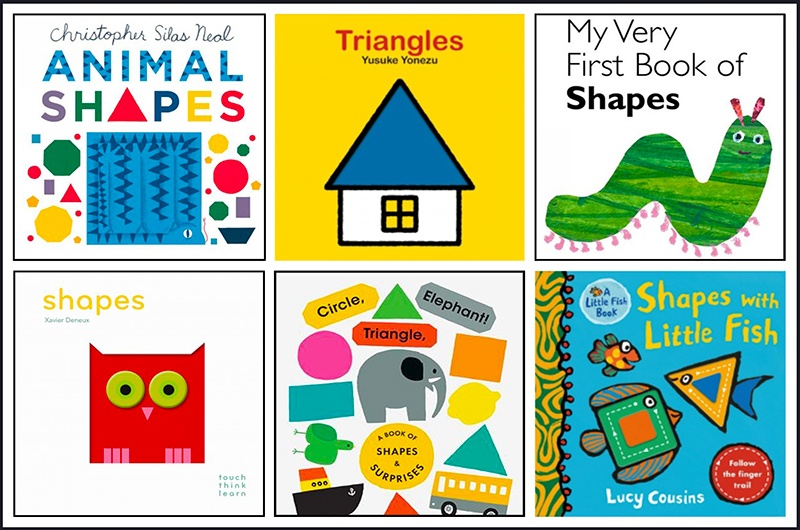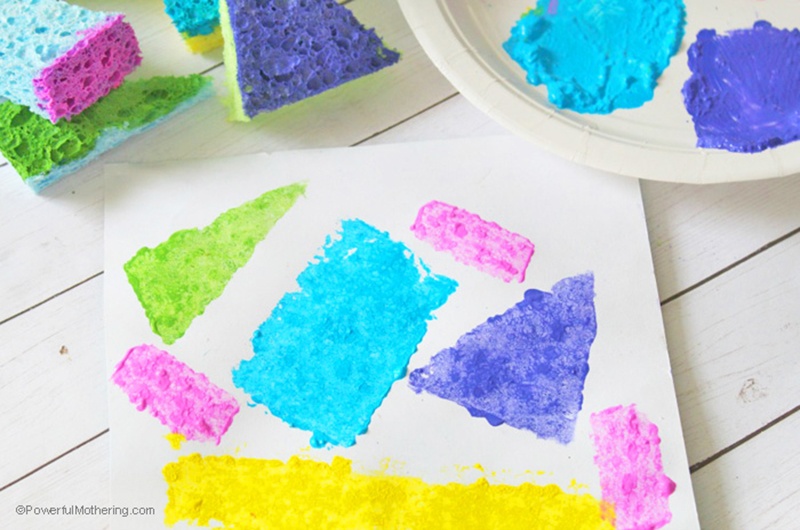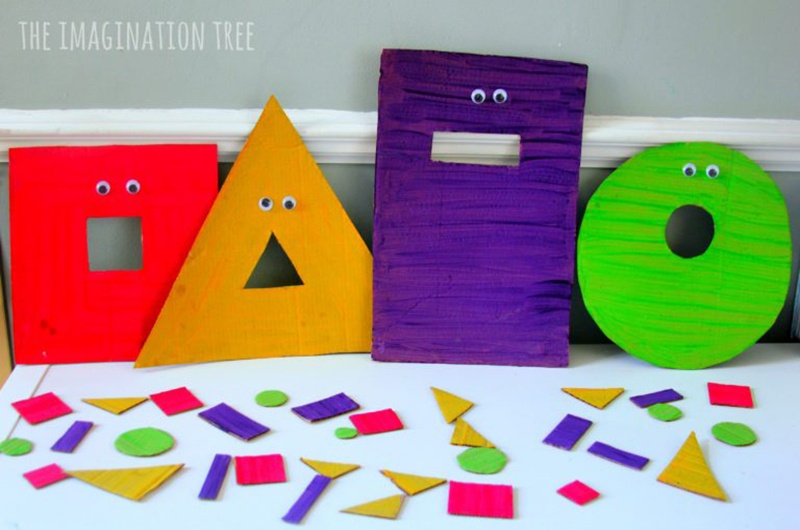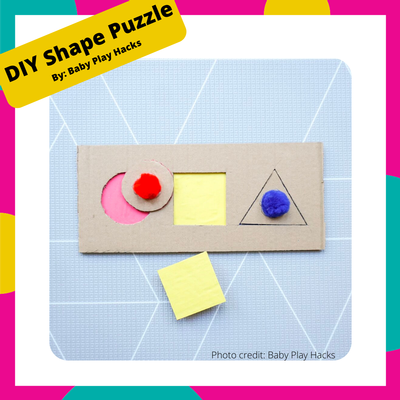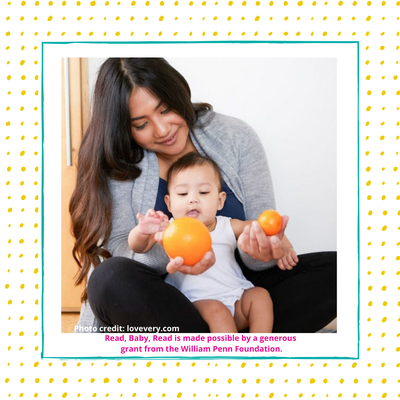Read, Baby, Read is a Free Library initiative focused on encouraging early literacy development among infants and young toddlers under two years old. We work with 12 participating libraries across Philadelphia to reach caregivers of all ages, providing resources that support early literacy skills, language development, and purposeful play. In addition, you can find early literacy tips and resources on our Instagram page @read.baby.read!
Each month, we bring you fun activity ideas with a theme based on the five early literacy practices from Every Child Ready To Read: Read, Sing, Write, Play, and Talk! So far, we’ve explored vehicles, animals, the body, water, and food!
This month is all about shapes!
READ
There are many fantastic board books about shapes available in the Free Library’s catalog. It’s easy to place holds online for free and schedule curbside pick-up at select neighborhood libraries.
- Animal Shapes by Christopher Silas Neal
This creative book is full of puns as familiar animals "become" different shapes. (See Sarah read it for storytime here.)
- Triangles by Yusuke Yonezu
This simply illustrated board book shows the different triangle shapes we see in everyday objects. Check out the Circles and Squares versions as well!
- My Very First Book of Shapes by Eric Carle
This fun board book isn’t just a book—it’s a puzzle! Mix and match the half-pages to find shapes that match the objects of the same size.
- Shapes by Xavier Deneux
Your little one can hone their fine motor skills and trace the shapes that they see in this hands-on book with die-cut pages.
- Circle, Triangle, Elephant: A Book of Shapes and Surprises by Kenji Oikawa
This silly book introduces basic shapes with a bunch of surprises thrown in.
- Shapes With Little Fish by Lucy Cousins
Explore all the shapes under the sea in this colorfully illustrated book with die-cut shapes that your little one can trace with their fingers.
For even more recommendations, check out this booklist of picture books about shapes!
SING
There are lots of ways to sing about shapes! Sarah has sung felt board songs about shapes in some of her storytimes. Check out "A Square is Like a Box" where all the shapes come together to form a picture, or "A Square is a Shape", where the shapes hide underneath each other. In addition, this shape-themed playlist from Jbrary features finger plays and lap bounces about shapes. You can find the lyrics to 20 more rhymes, action songs, and finger plays online. This list of shape songs features new lyrics to some familiar tunes, including "Do You Know What Shape This Is" sung to the tune of "The Muffin Man." You can find video versions of several shape songs from the PreKinders website, including movement-based songs like "The Circle Song."
WRITE
Shapes are very important for developing pre-writing skills, because understanding shapes is the first step in learning about letters. All letters are simply made up of different shapes put together, and once your child begins to learn shapes, they’re on their way to eventually learning the letters they’ll need for reading and writing. You can encourage exploration of shapes in your art projects too, which will help children develop the fine motor skills they’ll also need for writing. Try making your own shape "stamps" by cutting up sponges into familiar shapes, like in this DIY Sponge Stamping activity. As your child paints with the stamps, talk about the shapes they’re using. You can also paint with circles, using plastic easter eggs or making your own dot paint!
PLAY
There are many children’s toys that encourage the exploration of shapes, and you can make your own versions at home. Puzzles and shape sorters are perfect for learning about shapes. Puzzles have lots of benefits—not only is your little one learning how to match shapes, but they’re also working on their spatial awareness as they work to make the shapes fit in their corresponding spots. You can make your own DIY Shape Puzzle using cardboard and pom-poms. Or try making your own shape sorter toy out of a shoebox, cardboard box, or empty oatmeal container. This silly version of a shape sorter involves shape-eating monsters! You can also make a shape puzzle out of blocks.
Sensory play is a great time to include shapes as well. Try cutting shapes out of craft foam, felt, or paper and filling up a sensory bin. Or make your own squishy sensory bag filled with shapes! Taping the bag to a window adds an extra dimension to this sensory experience. You can achieve a similar effect by putting contact paper on a window and letting your little one stick shapes on it. Or stick contact paper on a wall and let your child grab shapes off of it, like in this DIY fine motor activity. Another great sensory option is to make these "touch-and-feel" shapes out of cardboard and pipe cleaners.
TALK
The world around us is full of shapes, and talking about them is a great way to bring awareness to them. Talk about the everyday shapes you see as you go about your day, such as the circle shape of an orange or the square shape of a table. Try going for a "shape walk" as you stroll around your neighborhood, pointing out the shapes you see, such as the triangle of a roof or the circle of a manhole cover. Notice the shapes of different signs or compare the shapes of leaves. You can even try taking pictures of what you see and then making your own "shape book" to explore when you’re at home.
Be sure to follow us on Instagram for daily tips and resources about early literacy as well as weekly virtual baby storytimes. And stay tuned for next month’s installment of this blog series with a brand new theme!
Read Baby Read’s team includes Early Childhood Specialists, Sarah Jacknis and Natasha Smith, and Program Coordinator Naisha Tyler. If you have questions about our program, feel free to email Naisha Tyler at TylerN @ freelibrary.org.
Read Baby, Read is made possible by a generous grant from the William Penn Foundation.
Have a question for Free Library staff? Please submit it to our Ask a Librarian page and receive a response within two business days.

